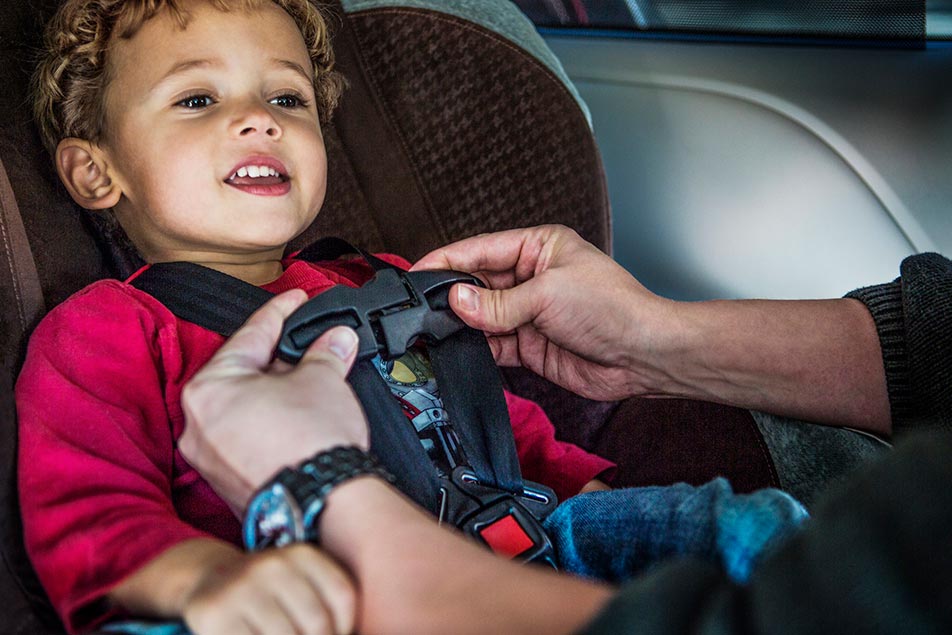
September 23-29 is Child Passenger Safety Week, but it’s never too soon to discuss the topic of car seat safety. According to the National Highway Traffic Safety Administration, one child under the age of 13 is involved in a crash every 33 seconds. Did you know car crashes are the leading cause of death for children ages 1 to 13? Proper use of car seats, boosters and seat belts can prevent many deaths and injuries. Jalyssa Kessler, BA, CCLS, CPST, certified child life specialist, car seat passenger safety technician, Parkview Health, tells us more.
Purchasing the right car seat
There are so many car seats on the market, it can be tricky figuring out which is the best model for your little one. Your child’s age, height and weight are factors to consider when picking out a car seat for them and/or making sure they are in the correct seat type. In addition, there are specifics about your car to take into consideration. Not every seat will fit in every vehicle, so it’s important to pick the best model for your vehicle as well as your child.
Another important step to purchasing a new car seat is to make sure you register the seat. Registering the seat ensures you will be notified about any recalls that pertain to that specific model. Many times, consumers are unaware they have a recalled car seat because they never registered the seat. Your seat should come with a registration card, but if you don’t have that anymore you can register the seat online.
Expiration date
Did you know car seats have an expiration date? They do, and their lifespan varies by brand. Making sure you correctly dispose of seats is crucial. You should never throw it in the trash as someone else can take it and use it. You should also never buy or sell seats, expired or not. You never know the full history of a seat and damage might not be visible to the eye.
Often times, seats are damaged in car accidents but may not show the damage, and could jeopardize the safety of your child. This is why manufacturers say seats need to be replaced no matter how bad the accident is or if the child was in the seat or not; not for them to make another sale.
Retailers will often have car seat recycle events, more commonly known as trade-in events, as a way for consumers to properly dispose of seats. During trade-in events consumers take a car seat to recycle, and sometimes, even offer a coupon to save on a new seat, stroller or select baby gear.
Rear-facing recommendations
As of August 30, The American Academy of Pediatrics (AAP) updated their recommendations to require that children should remain in a rear-facing car safety seat as long as possible, until they reach the highest weight or height allowed by their seat. This new recommendation removes the specific age milestone.
All car seats come with instruction manuals. Reference the manual to find the manufacturer’s weight and height limits specifically for each seat. This information should also be listed on a sticker on the car seat. When the child is approaching their seat’s limits, parents should begin considering transitioning the child to the next level, or find the same level of seat but with higher limits. While transitioning a child from one stage/milestone of a car seat to another is an exciting thing for parents, this is one area of a child’s milestones that delaying milestones is best. When it comes to car seats, each transition reduces the protection to the child.
Seat check events
Many seat check events will be taking place on National Seat Check Saturday, September 29. Keep your ears open for an event near you. You may also visit this site to find a child passenger safety technician near you. You can also schedule a free, private car seat check with a technician at Parkview Hospital Randallia (877-774-8632) or Parkview Whitley Hospital (260-248-9426), which serve as permanent fitting stations.
Have general questions or need help? Contact one of our Certified Child Life Specialists and car seat passenger safety technicians at (260) 266-1954 or email jalyssa.kessler@parkview.com.
Additional resources
Tips and information on choosing the right seat for your child can be found here.
A good visual of child passenger safety tips by age, with facts, can be found here.
This is a great website for caregivers to reference about car seats.
